Honokiol suppresses formyl peptide-induced human neutrophil activation by blocking formyl peptide receptor 1
- PMID: 28751674
- PMCID: PMC5532207
- DOI: 10.1038/s41598-017-07131-w
Honokiol suppresses formyl peptide-induced human neutrophil activation by blocking formyl peptide receptor 1
Abstract
Formyl peptide receptor 1 (FPR1) mediates bacterial and mitochondrial N-formyl peptides-induced neutrophil activation. Therefore, FPR1 is an important therapeutic target for drugs to treat septic or sterile inflammatory diseases. Honokiol, a major bioactive compound of Magnoliaceae plants, possesses several anti-inflammatory activities. Here, we show that honokiol exhibits an inhibitory effect on FPR1 binding in human neutrophils. Honokiol inhibited superoxide anion generation, reactive oxygen species formation, and elastase release in bacterial or mitochondrial N-formyl peptides (FPR1 agonists)-activated human neutrophils. Adhesion of FPR1-induced human neutrophils to cerebral endothelial cells was also reduced by honokiol. The receptor-binding results revealed that honokiol repressed FPR1-specific ligand N-formyl-Nle-Leu-Phe-Nle-Tyr-Lys-fluorescein binding to FPR1 in human neutrophils, neutrophil-like THP-1 cells, and hFPR1-transfected HEK293 cells. However, honokiol did not inhibit FPR2-specific ligand binding to FPR2 in human neutrophils. Furthermore, honokiol inhibited FPR1 agonist-induced calcium mobilization as well as phosphorylation of p38 MAPK, ERK, and JNK in human neutrophils. In conclusion, our data demonstrate that honokiol may have therapeutic potential for treating FPR1-mediated inflammatory diseases.
Conflict of interest statement
The authors declare that they have no competing interests.
Figures

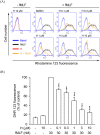
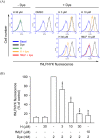

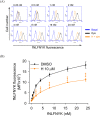
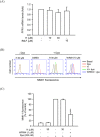

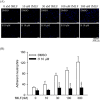


Similar articles
-
Garcinia Multiflora Inhibits FPR1-Mediated Neutrophil Activation and Protects Against Acute Lung Injury.Cell Physiol Biochem. 2018;51(6):2776-2793. doi: 10.1159/000495970. Epub 2018 Dec 12. Cell Physiol Biochem. 2018. PMID: 30562761
-
Bioactive secondary metabolites of a marine Bacillus sp. inhibit superoxide generation and elastase release in human neutrophils by blocking formyl peptide receptor 1.Molecules. 2013 Jun 3;18(6):6455-68. doi: 10.3390/molecules18066455. Molecules. 2013. PMID: 23736784 Free PMC article.
-
Propofol inhibits superoxide production, elastase release, and chemotaxis in formyl peptide-activated human neutrophils by blocking formyl peptide receptor 1.J Immunol. 2013 Jun 15;190(12):6511-9. doi: 10.4049/jimmunol.1202215. Epub 2013 May 13. J Immunol. 2013. PMID: 23670191
-
The potential impacts of formyl peptide receptor 1 in inflammatory diseases.Front Biosci (Elite Ed). 2016 Jun 1;8(3):436-49. doi: 10.2741/E778. Front Biosci (Elite Ed). 2016. PMID: 27100350 Review.
-
Basic characteristics of the neutrophil receptors that recognize formylated peptides, a danger-associated molecular pattern generated by bacteria and mitochondria.Biochem Pharmacol. 2016 Aug 15;114:22-39. doi: 10.1016/j.bcp.2016.04.014. Epub 2016 Apr 27. Biochem Pharmacol. 2016. PMID: 27131862 Review.
Cited by
-
The formyl peptide fMLF primes platelet activation and augments thrombus formation.J Thromb Haemost. 2019 Jul;17(7):1120-1133. doi: 10.1111/jth.14466. Epub 2019 May 24. J Thromb Haemost. 2019. PMID: 31033193 Free PMC article.
-
Druggable targets for the immunopathy of Alzheimer's disease.RSC Med Chem. 2023 Jul 11;14(9):1645-1661. doi: 10.1039/d3md00096f. eCollection 2023 Sep 19. RSC Med Chem. 2023. PMID: 37731705 Free PMC article. Review.
-
SIRT3 activator honokiol ameliorates surgery/anesthesia-induced cognitive decline in mice through anti-oxidative stress and anti-inflammatory in hippocampus.CNS Neurosci Ther. 2019 Mar;25(3):355-366. doi: 10.1111/cns.13053. Epub 2018 Sep 17. CNS Neurosci Ther. 2019. PMID: 30296006 Free PMC article.
-
A fluorescent photoaffinity probe for formyl peptide receptor 1 labelling in living cells.RSC Chem Biol. 2023 Jan 13;4(3):216-222. doi: 10.1039/d2cb00199c. eCollection 2023 Mar 8. RSC Chem Biol. 2023. PMID: 36908701 Free PMC article.
-
FPR1 mediates the tumorigenicity of human cervical cancer cells.Cancer Manag Res. 2018 Nov 16;10:5855-5865. doi: 10.2147/CMAR.S182795. eCollection 2018. Cancer Manag Res. 2018. PMID: 30510453 Free PMC article.
References
Publication types
MeSH terms
Substances
LinkOut - more resources
Full Text Sources
Other Literature Sources
Research Materials
Miscellaneous

